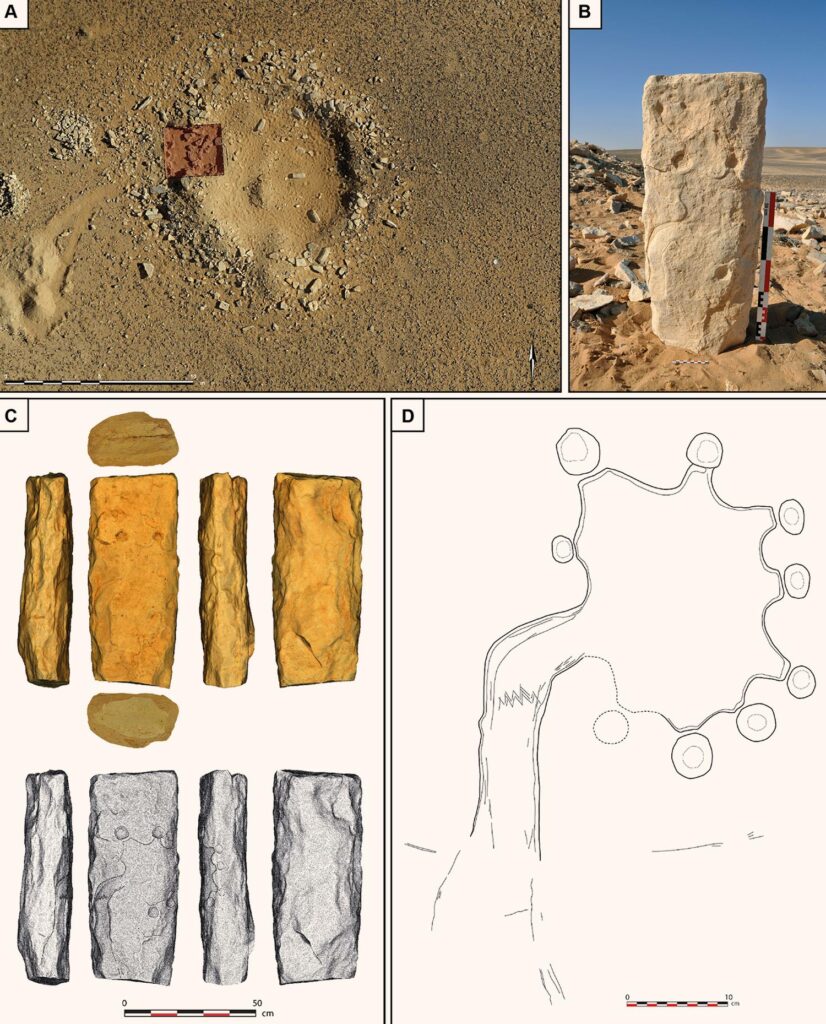Introduction

Archaeologists have made a groundbreaking discovery in the deserts of the Middle East – ancient stone engravings that are believed to be the earliest known architectural drawings. These engravings, estimated to be between 7,000 and 9,000 years old, depict “desert kites,” large-scale hunting traps built by early humans to hunt herd animals.
The Engravings and Their Significance
Precision and Spatial Perception

The engravings showcase an incredible level of precision and spatial perception that would typically only be possible from an aerial perspective. This remarkable mental mastery of spatial awareness is unparalleled in artifacts from that time period, according to archaeologists.
Rémy Crassard, an archaeologist at the French National Center for Scientific Research and the lead author of the study, expressed his awe at this discovery, stating:
“It’s mind-blowing to know and to show that they were able to have this mental conceptualization of very large spaces and to put that on a smaller surface.”
Desert Kites: Ancient Hunting Structures
Landscape-Scale Traps

These “desert kites” were landscape-scale structures built by early humans to trap and hunt herd animals like gazelles. Over 6,200 of these structures have been found across the Middle East and Central Asia, with the highest concentration in southern Syria, eastern Jordan, and northern Saudi Arabia.
The kites consisted of enclosures surrounded by deep pits, some as deep as 13 feet, designed to prevent the animals from escaping. Hunters would herd the animals into these traps, making it easier to contain and kill them.
Crucial Importance to Ancient Societies
According to the authors of the study, these desert kites were likely of crucial importance to the societies that built them, as they provided a reliable source of food and resources.
The Engravings’ Discovery

The two scale engravings were discovered in 2015 in the Jibal al-Khashabiyeh area of Jordan and the Jebel az-Zilliyat plateau of the Nefud Desert in Saudi Arabia, about 166 miles apart.
The Jibal al-Khashabiyeh Engraving
The engraving found in Jibal al-Khashabiyeh was carved in low relief on a 200-pound limestone block. It depicts “driving lines,” likely used to herd animals, leading to a star-shaped enclosure with pit-traps depicted as wide as two inches.
The Jebel az-Zilliyat Engraving
The engraving from Jebel az-Zilliyat was found on a 12.5-foot-long boulder, with nearly three-foot-long driving lines leading to a star-shaped enclosure about two feet wide.
Conclusion
These remarkable engravings provide a unique glimpse into the cognitive abilities and spatial awareness of ancient humans, challenging our understanding of their capabilities. The authors suggest that these engravings may have been used to organize and coordinate the collective hunts, rather than for planning the structures themselves.
This groundbreaking discovery not only sheds light on the ancient hunting practices but also highlights the ingenuity and sophistication of our ancestors, leaving us in awe of their mental mastery of spatial perception.

